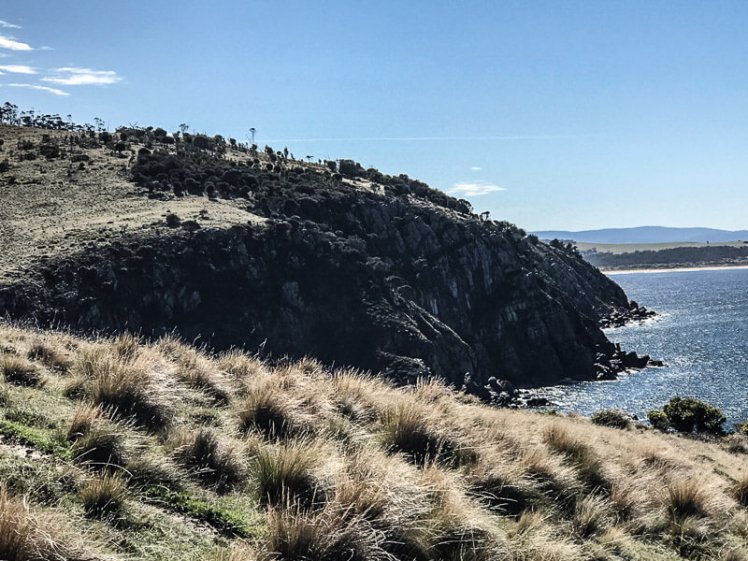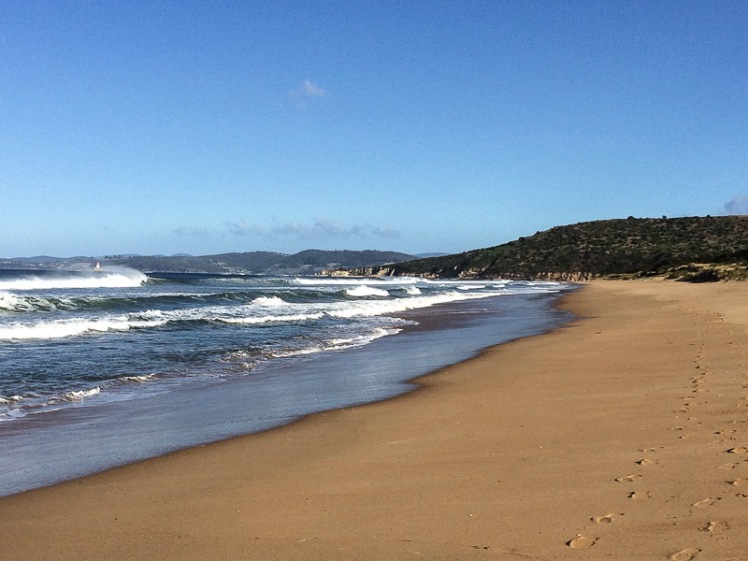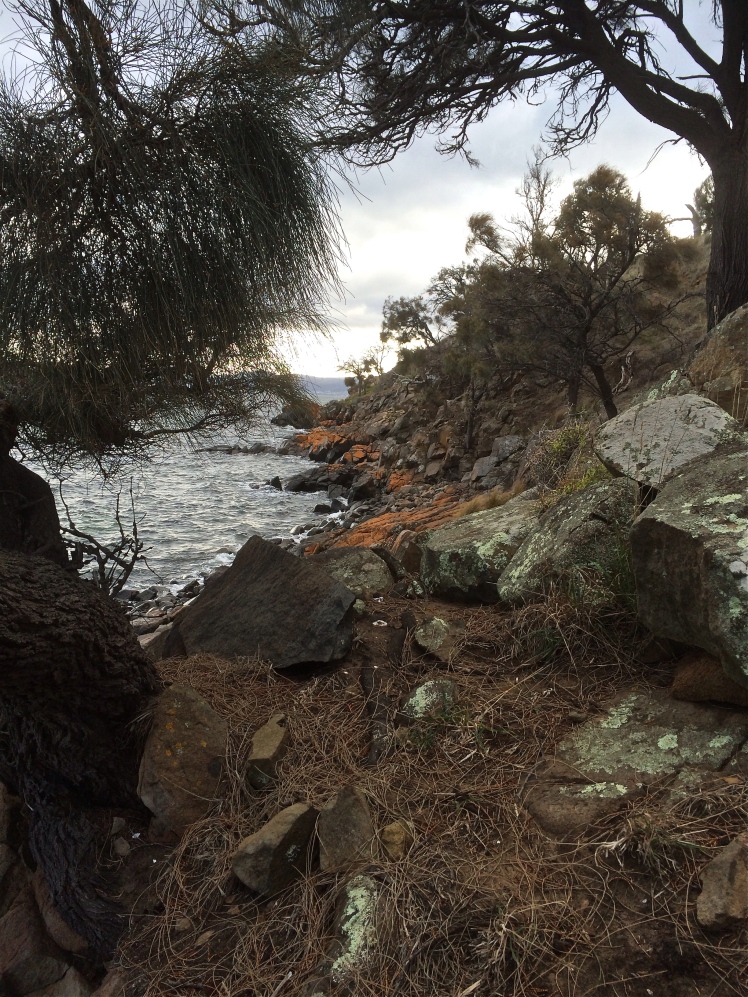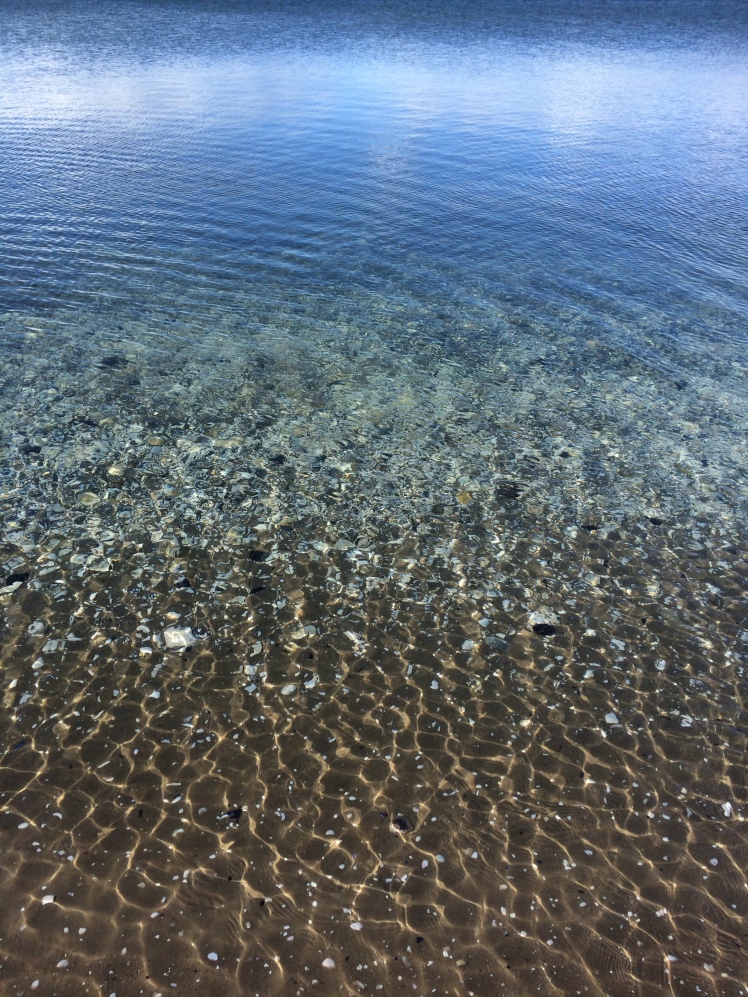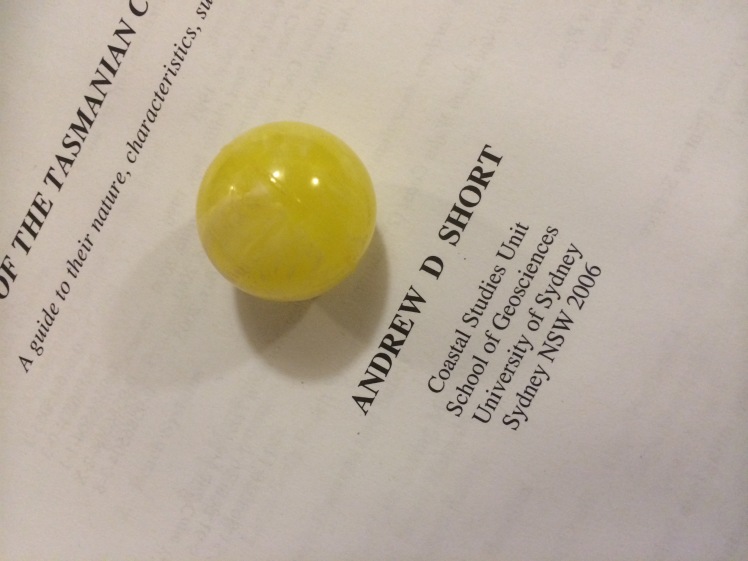Frederick Henry Bay: Lauderdale’s May’s Point to Seven Mile Beach along Roches Beach and Single Hill
Roches With Gritted Teeth
We couldn’t have chosen a worst day for our walk. It was snowing on the mountain, raining in town and the best the temperature could manage was a measely 7 degrees centigrade.
Cathy reminded me that we had stoic Scottish blood coursing our veins; I kept secret my preference for a sauna. Our hardiness extended only so far and we agreed to leave one car at Seven Mile Beach. That done we sought out a Lauderdale cafe to psych ourselves up for the miserable walk ahead.
Our cafe on the western side of the suburb had a view across Ralphs Bay on the Derwent River to the city and the mountain and from the table we’d chosen beside the wood heater we looked out at water chaotic with white caps. Kunanyi, normally dominating the western horizon, had vanished, the wind was loud and I was pretty damned glad I wasn’t sailing.
‘We had hardy ancestors,’ said Cathy firmly.
‘There might not be much beach to walk on,’ I suggested in a faint voice. It looked to me like the conditions had whipped up a higher than usual tide.
Lauderdale is a largely low lying suburb that takes in the isthmus where the South Arm Peninsula begins and straddles Frederick Henry Bay in the east and the Derwent River in the west. Back in the early 1900s there had been enthusiasm for a canal that would reduce the distance to Hobart for the shipping of farm produce, much like the Dunally canal further north saves yachts the trip around the Tasman Peninsula today. But work was hampered by the First World War and when they got down to business in 1924 storms made it apparent breakwaters would be needed on Roches Beach to prevent silting. Too expensive, the decision makers concluded and the project was abandoned, leaving a 1 km canal that doesn’t quite reach the beach and is hardly visible at the Ralphs Bay end (Alexander). Later I discovered that the layer of sand in this area is skimpy. It covers over two hundred metres of clay, sandy clay and boulder beds that filled in the ‘eroded, ancient rift valley landscape as sea level rose.’ (Leaman, 1999).
The two most significant bumps in its landscape are Richardson’s Hill with May’s Point below it at the southern end of Roches Beach and Single Hill to its north. Our walk was to begin below the first and take us around the second – but the weather was so truly terrible that we prevaricated by driving slowly up Richardsons Hill and then slowly back down to Roches Beach, slowly parking the car close to May’s Point and slowly donning extra thermals and wet weather gear before braving the lashing rain.
We began walking down the beach in a most unhardy manner. The tide was indeed high, the work of the stormy south westerly, but at least the wind was at our backs. Slowly our Scottish blood began exerting itself and snug in all our layers we got our stride up and congratulated ourselves for defying the weather.
Lauderdale takes its name from Ann and Robert Mather’s Ralphs Bay farm, Lauderdale Park. They were early settlers and their inspiration was Lauder, Robert’s birthplace near Berwick-upon-Tweed in Scotland. When it comes to hardiness Ann totally put us to shame, ‘raising her children and managing an unwilling convict workforce’ on this isolated farm (Clarence City Council). By the 1950s settler hardiness had given way to hedonism and holiday shacks began filling in the landscape. These days it’s suburban homes fronting up to the dunes along this 3.5 km section of the beach, their gardens spilling out into the public reserve.

The narrow beach sloped steeply that day and the waves were slapping at the dunes in some places, undercutting them and threatening to saturate our ankles, so we decided to see if we could find a track behind the beach and for a while picked our way through undergrowth and escapee plants. This high sea also had us discussing Lauderdale’s vulnerability to storm surges and sea level rise, much like its southern neighbour, Cremorne. The isthmus isn’t much above sea level and the small dunes along Roches are already compromised by human impacts. We also spent considerable time discussing whether we were walking one beach or several and what, if anything they were called. Later I referred to the guru, Andrew Short, who in his inventory referred to Roches Beach as a 5 km stretch of increasingly wider beaches lying between Mays Point and Single Hill, although actually 3 and 4 narrow again, we found. For the record, he called them Roches Beach and then Roches Beach North 1, 2, 3 and 4 but the locals probably have different names for them.
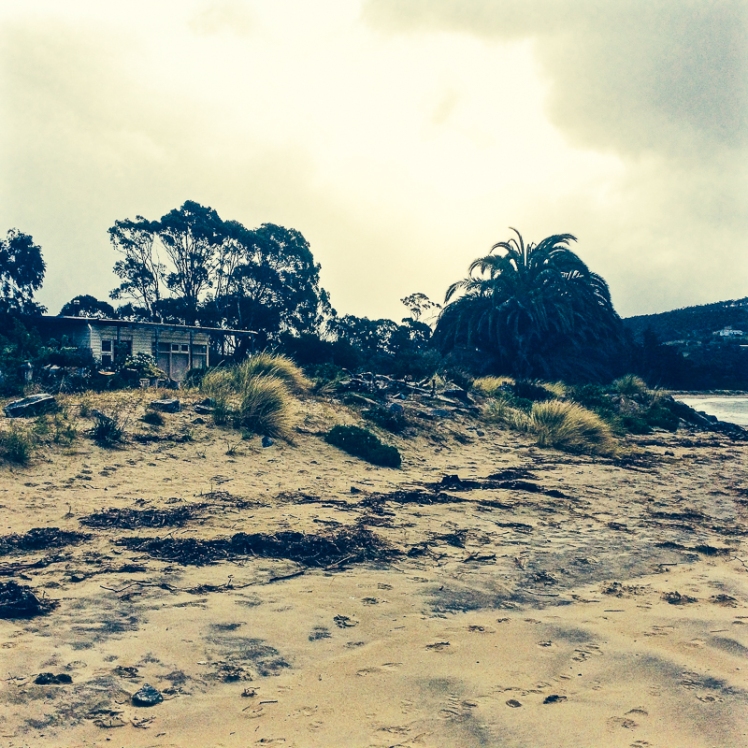
We passed Bambra Point and its reef as the weather began clearing and reached the part of the beach that Cathy most loves because it holds memories of regular visits with her children when they were little. She pointed out the shelter provided by the trees and Epping Park Reserve behind the dunes and took me up there to take a peek at Lauderdale Yacht Club, the base for catamaran sailing in Hobart. Later, reading David Leaman’s Walk into History (1999) I learned that there are some brilliant examples of Permian rocks in this area. Also, right at this point on a low tide you can see the irregular roof of the main Jurassic dolerite intrusion. (If you want to know why the dolerite in this area is great for giving you an idea of the gigantic intrusions dominating central and eastern Tasmania pick up a copy of this book and take a stroll here – it’s definitely worth it.)

Single Hill and North Roches Beach (T 398)
We passed the sailing club and the boat ramp and took the path leading up Single Hill, that singular landmark as you fly into Hobart. Initially we walked below big houses I hadn’t known existed and at the base of the hill Roaches Beach (N3) aka Short’s T399, a narrow 50m ribbon of sand and rock, that is a continuation of Roches Beach N2 aka T400 was being bashed by waves.
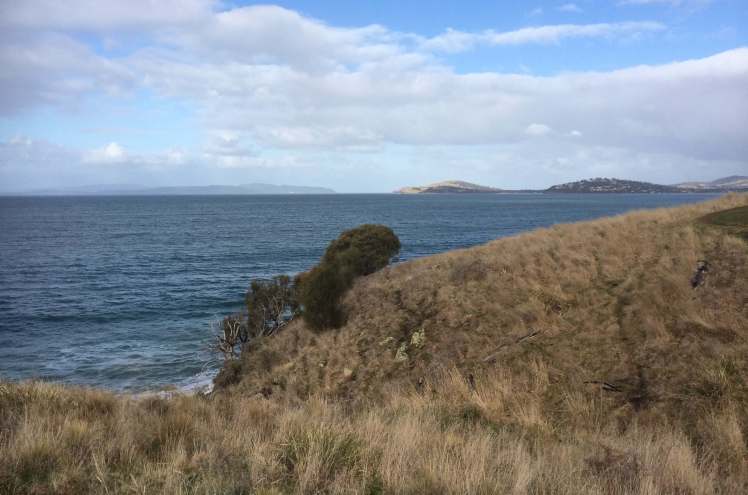
We were walking amongst eucalypts and she-oaks following what is really pretty much a contour path with a lovely sandstone bridge.

Cathy pointed out the most northern beach below us (T398). There were steep steps leading down to it but we continued on around the hill, stopping every now and then to take in the sweeping views of Frederick Henry Bay and the Tasman Peninsula. But if you’re keen on geology this little beach is definitely worth a visit because according to Leaman the Permian rich siltstone here is rich in fossils. Far away over the bay we saw enormous waves breaking on a point we struggled to identify. Eventually the path turned towards Seven Mile Beach and we gradually descended on to the sand.
T 397 Seven Mile Beach (southern corner)
There are shacks clustered in the corner beneath the hill south of where picturesque Acton River enters the beach. A small flock of ducks were enjoying it as we crossed the wooden bridge.
The walk had taken roughly 3 hours but I was enthralled by it and so the next Saturday I was back with my friend Rosemary White, who had sore knees and wanted an easy walk. This time, with an impeccable blue sky and far kinder weather we walked it the other way around, from Seven Mile to Launderdale.
Again, the beautiful creek at Seven Mile, and again the expectant flock of ducks. Walking this way there were points where it seemed we were trailing the edge of a great bay with a relatively small opening. Identifying landmarks was difficult but our geographic guesses were confirmed by a local we encountered, walking alone with his radio tuned in to the racing.
Reaching Roches we turned and walked Roches N3, pausing to examine the small butterfly shaped shells that had washed up everywhere on the sand.
Kayaking Single Hill
Still not done with this area I brought others to walk it and keen to explore Roches N4 I paddled around Single Hill from Seven Mile Beach to Lauderdale. It’s a short paddle but (small confession) when the wind came up my enthusiasm for paddling to May’s evaporated and I pulled in early.












